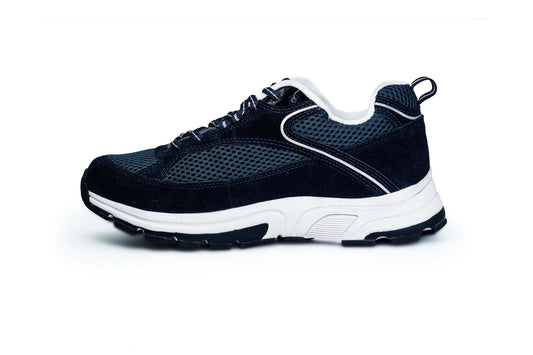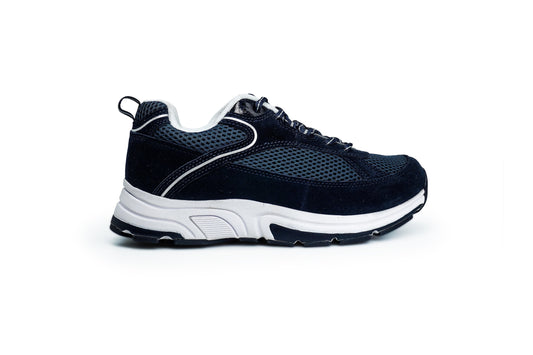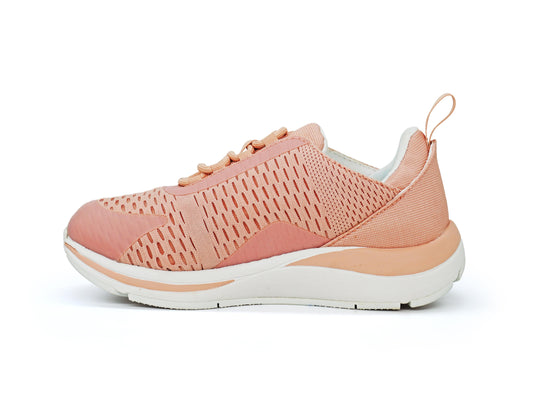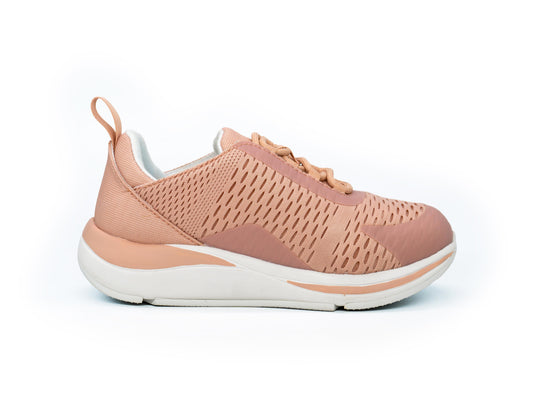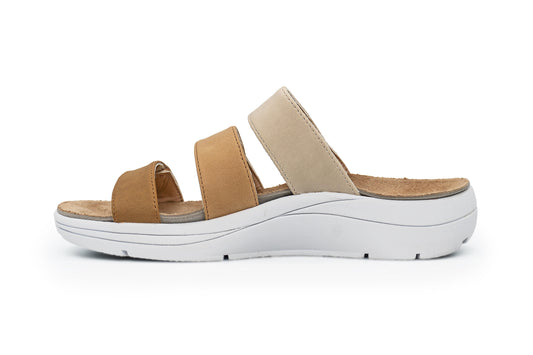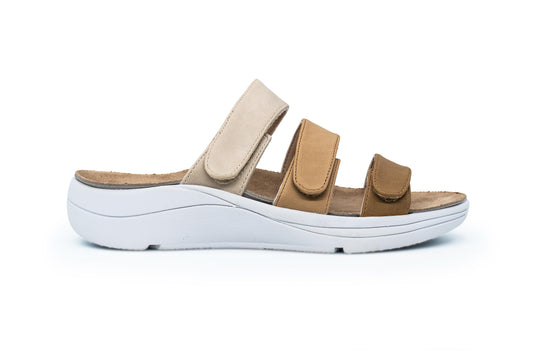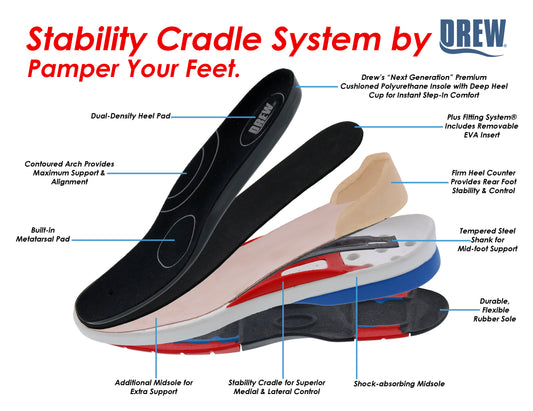WHY DIABETIC SHOES ARE RECOMMENDED BY PODIATRIST?
Diabetes is a chronic problem affecting millions of people. However, the impact this has on foot health is left in the dark. Diabetic conditions tend to increase the danger of foot problems because many suffer from complications such as nerve damage, poor circulation, or poor healing of wounds.
These factors make foot care for people with diabetes very important, and a preventive measure that is most prominent is wearing diabetic shoes. Podiatrists, who are involved in the care of patients' feet and ankles, sometimes recommend diabetic shoes to their clients to prevent complications, promote comfort, and enhance mobility.
This article explores why podiatrists highly recommend wearing diabetic shoes and the benefits to be derived from them.
Protection against foot injuries
A reason diabetes shoes should be recommended is that these shoes prevent and protect them from foot wounds or injuries. People with diabetes face a higher risk of foot injuries because diabetic neuropathy often causes a loss of sensation in the feet. This loss of feeling can lead to unnoticed cuts and blisters, increasing the risk of complications.
When the sensation is reduced, then the people may not feel pain from injuries, thus they may continue walking or putting on improper footwear without realizing that they are worsening the injury.
Diabetic shoes are designed with features that can minimize such occurrences. These shoes contain cushioned interiors, seamless linings, and protective components to minimize friction and pressure on the feet. They are made from soft breathable materials, thereby decreasing the likelihood of getting sores or blisters. As a result, protection of the feet is ensured regardless of any daily activities performed.
Moreover, diabetic shoes are accompanied by extra depth, creating room for the toes that is large enough to prevent any part of the toes from rubbing against the shoe and, thus, causing painful injury. The protective design protects patients from developing open wounds that may cause infection, a factor highly risky for diabetic patients.
Improved circulation
Diabetic neuropathy often happens with poor circulation in the feet and legs. Since blood flow is reduced, your feet may become cold, and swollen, and in worst cases, may delay wound healing or injury healing processes. Poor circulation increases the risks of infections and complications which is why proper footwear assumes even more importance for people having diabetes.
Diabetic shoes are designed for the improvement of circulation with a well-fitted and comfortable structure that supports the feet without restricting blood flow. The shoes usually have a wider toe box and arch support, which helps the distribution of pressure evenly around the foot, thus making it not strain any specific area. This even pressure helps promote better circulation and prevents the development of painful, swollen feet.
This means that the soft materials and cushioning of diabetic shoes reduce the possibility of foot constriction, which could further inhibit blood flow. Diabetic shoes, therefore, aid in maintaining proper blood circulation that will help to promote the health of the foot, thereby reducing the risk of complications like ulcers, infections, and even amputations.
Prevention of foot deformities
Diabetes can cause a wide variety of foot deformities. These include bunions, hammertoes, and Charcot foot, which is a condition where the bones in the foot become weakened and start to collapse. Most of these deformities result from abnormal pressure or irritation caused by poorly fitting shoes. If left untreated, they can lead to severe pain, limited mobility, and more serious complications.
Diabetic shoes are created to cater to common deformities in the foot. They contain a wider toe box than usual to prevent pressure build-up on the toes and the front foot. For instance, a patient suffering from a bunion or hammertoe might prefer diabetic shoes, which are accommodating of this deformity, having a wide toe box and soft material that doesn't irritate the deformity and therefore does not aggravate the condition and cause the patient pain and discomfort.
In addition, diabetic shoes will correct and prevent misalignment issues that may lead to the formation of deformities. They are designed to provide maximum arch support, which helps distribute pressure evenly across the foot and prevents localized stress.
Reduction of foot and ankle pain
Generally, many patients with diabetes experience problems with their feet and ankles; in fact, those individuals have neuropathy or circulation difficulties. Poorly fitting shoes over time exacerbate this condition by misaligning the foot or putting additional stress in particular regions, leading to pain and discomfort that raises the risk for more complicated diseases, such as ulcers or calluses.
Orthopedic features in diabetic shoes include arch support, cushioned insoles, and shock-absorbing soles. These reduce foot and ankle pain as cushioning reduces the impact of walking or running on the joint and prevents joint pain. The support will help keep the feet in an appropriate position. Diabetic shoes are also lightweight, reducing the strain on feet and joints. This is why they are especially great for people suffering from foot or ankle pain.
Through a reduction of pain and enhancement of proper alignment, diabetic shoes enable diabetes patients to carry an active life. Diabetic shoes encourage people to enjoy daily activities with much ease and freedom from potential harm.
Podiatrists generally recommend diabetics to wear shoes that deliver the necessary support, comfort, and protection. Specific to diabetic foot conditions, their shoes are intended to improve the foot health of diabetic persons who suffer from a condition commonly known as neuropathy or poor blood circulation, resulting in injury and deformities.
Diabetic shoes prevent complications and pain, as well as support and comfort while offering a combination of protection and improved circulation. Wearing diabetic shoes is an essential step for any person with diabetes to maintain mobility and reduce the risk of serious foot problems.
Discover the perfect balance of support, style, and expert guidance for your feet. Explore our collection of orthopedic and diabetic shoes designed to keep you moving with ease.
Start your journey to happy, healthy feet today!
Visit us at DiabeticShoe for more tips, insights, and footwear solutions.
Stay Connected:
Follow us on Facebook, Instagram, YouTube, LinkedIn, Twitter, Pinterest, and Quora for updates, advice, and more informative content.

